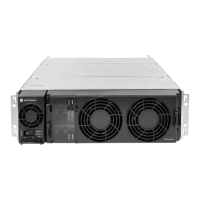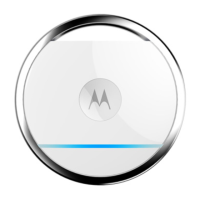3-4 MTR3000 Exciter Module: Functional Theory of Operation
3.3.1.1.2 Voltage Controlled Oscillator (VCO)
The DC control voltage from the synthesizer is fed to dual VCOs which generate the RF carrier
signal. Within each band, one VCO generates signals in the upper half of the band, while the other
VCO generates signals in the lower half of the band. Only one VCO is active at a time. Selection of
the active VCO is provided by a VCO_SELECT signal from the PLL IC.
The active VCO responds to the DC control voltage and generates the appropriate RF signal. This
signal is fed through impedance matching, amplification, and filtering and is output to the RF Switch
Circuitry. A sample of the output is returned to the PLL IC to serve as a VCO feedback signal.
3.3.1.1.3 Modulation
The Exciter uses dual-port FM modulator consisting of Digital Signal Processor (DSP), PLL low-port
and high port blocks, fractional-N PLL, loop filter and the VCO. The modulator is calibrated once
during factory test and its values are stored in the EEPROM. The modulator does not require any
further tuning or maintenance.
3.3.1.1.4 Amplifiers
The amplifiers consist of a driver amplifier and the final amplifier. The driver amplifier operates from a
nominal 5V supply and the final amplifier operates from a nominal 10 V supply. The driver amplifier
amplifies the VCO output signal and provides the output signal to the final amplifier. There are fixed
attenuators at the output of the driver and final amplifier to set the Exciter output power level. The
final amplifier amplifies the signal and provides a constant signal level to the PA.
3.3.1.1.5 RF Switch Circuitry
The modulated RF signal from the VCO is fed through a buffer, driver, attenuator and finally to an RF
switch circuit. Signal EX_ENABLE from the SCM controls the switch and final amplifier. The RF
signal is passed through a LPF and to a BNC connector mounted in one corner of the module, just
outside the module cover. A short coaxial cable connects the Exciter output to the power amplifier
module.
3.3.1.2 Data Communications
3.3.1.2.1 Communications with Station Control Module
Data communications between the Exciter and the Station Control Module microprocessor (μP) is
performed via a Serial Peripheral Interface (SPI) bus. This bus allows the SCM μP to send data to
the synthesizer PLL IC (to select frequency) and to read the ADC Converter IC.
3.3.1.2.2 ADC Converter Circuitry
Analog signals from various strategic operating points throughout the Exciter board are fed to an
ADC converter, which converts them to a digital signal and, upon request by the Station Control
Module, outputs the signal to the Station Control Module via the Serial Peripheral Interface (SPI) bus.
3.3.1.3 Voltage Regulation/Filtering Circuitry
The voltage regulator circuitry consists of a +5 V, +3.3 V and +2.775 V regulators that supplies power
to the digital circuitry and the PLL. The +12 V regulator is used to supply power to the VCO and the
+10 V supplies power to the final device.

